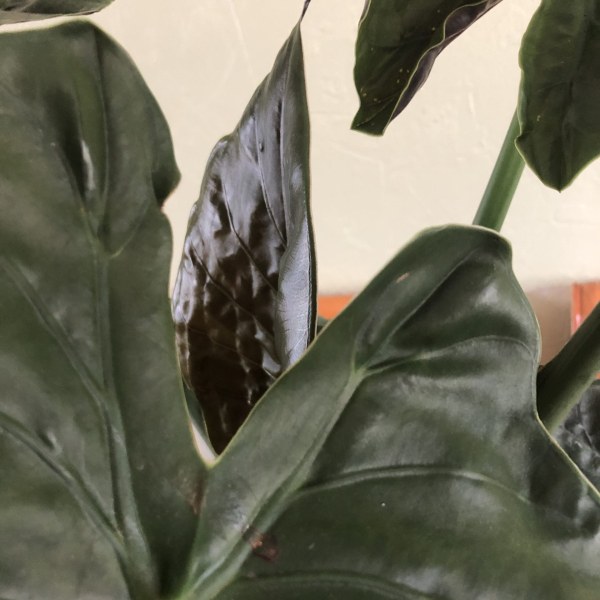Overwintering Alocasias in the UK can be a bit challenging due to the colder climate. Alocasias are tropical plants and are not frost-tolerant, so it’s important to take some precautions to ensure their survival during the winter months. Here are some tips for overwintering Alocasias in the UK:
- Timing: As the temperatures start to drop in the autumn, it’s advisable to prepare your Alocasias for overwintering. Ideally, you should bring them indoors before the first frost. Monitor the weather forecast in your area and plan accordingly.
- Digging and potting: Before bringing your Alocasias indoors, dig them up from the garden carefully, trying to preserve the root ball as much as possible. Shake off excess soil and inspect the plant for any signs of pests or diseases. Pot them up individually in well-draining soil using pots that have drainage holes.
- Cutting back foliage: Trim off any yellowing or damaged leaves from the Alocasia. Cutting back the foliage helps reduce water loss and encourages new growth when the plant becomes dormant during the winter.
- Light and temperature: Alocasias prefer bright, indirect light, even during winter. Place them in a location where they can receive as much sunlight as possible, such as near a south or west-facing window. Maintain the indoor temperature between 60-75°F (15-24°C) to keep them comfortable.
- Watering: During the winter, Alocasias enter a period of dormancy, and their water requirements decrease. Water sparingly, allowing the soil to dry out slightly between waterings. Be cautious not to overwater, as this can lead to root rot.
- Humidity: Alocasias appreciate high humidity levels, which can be a challenge during the winter when indoor heating tends to dry out the air. Increase humidity around your Alocasias by using a humidifier, placing a tray with water and pebbles near the plants, or grouping them with other moisture-loving plants.
- Pests: Check your Alocasias regularly for any signs of pests, such as spider mites or mealybugs. Indoor conditions can sometimes favor pest infestations. If you spot pests, isolate the affected plant and treat it with appropriate insecticidal solutions following the instructions on the product label.
- Dormancy and growth: During the winter, Alocasias may experience a period of dormancy, with slowed growth or even leaf loss. This is normal. Reduce fertilization during this time and wait for signs of new growth in the spring before resuming regular feeding




